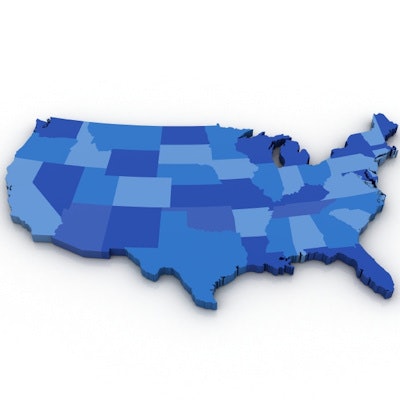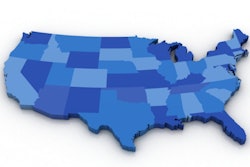
Counties that are poor and rural are less likely to have access to a radiologist who accepts Medicare patients than counties that are richer and urban. These same counties are also less likely to have access to subspecialized radiologists, according to a study published online January 2 in the Journal of the American College of Radiology.
Although concern about a lack of even geographical distribution in the radiologist workforce is not new, whether subspecialization further complicates geographical differences has not been fully explored, wrote a team led by Dr. Andrew Rosenkrantz of NYU Langone Medical Center.
"[It has been] previously suggested that geographic redistribution may be at least a partial solution to current radiologist workforce disparities," the group wrote. "However, even with redistribution, the total supply of subspecialist radiologists may not be sufficient to achieve widespread geographic coverage."
Confounding factor?
 Dr. Andrew Rosenkrantz from NYU Langone.
Dr. Andrew Rosenkrantz from NYU Langone.In a 2015 study published in Radiology, Rosenkrantz and colleagues found state-to-state variations in the rural versus urban distribution of U.S. radiologists. But that study did not address geographic variation in the context of subspecialization.
"By focusing our work more granularly at the county level and further considering the substantial variation in individual radiologists' unique practice characteristics [in this study], we show ... that those prior concerns of maldistribution of the radiologist workforce are likely further confounded by ... variation in the subspecialization of radiologists within given communities," they wrote.
The researchers used Medicare data to identify 32,844 radiologists who participated in Medicare between 2012 and 2014. Next, they calculated the following measures for 3,143 U.S. counties:
- Total number of radiologists
- Total number of generalist radiologists
- Total number of subspecialist radiologists
- Percent of radiologists in the county who are subspecialized
- Radiologists' average percentage of billed work relative value units (wRVUs) in a single subspecialty
The researchers also gathered county information such as population size, percent male and female, racial characteristics, median household income, insurance status, mammography screening compliance, and years of potential life lost before the age of 75.
Counties with at least one Medicare-participating radiologist (41.5%) had larger populations, lower rural percentages, higher household incomes, higher mammography screening rates, and lower premature death rates, the researchers found. Just over a fifth (21.8%) of counties had at least one Medicare-participating subspecialist radiologist; the average number of these per county was 4.6.
| County demographics based on Medicare-participating radiologists | ||
| Measure | No Medicare-participating radiologists | At least 1 Medicare-participating radiologist |
| Population | 20,253 | 197,050 |
| Rural | 74.6% | 39.5% |
| Household income | $42,510 | $47,608 |
| Mammography screening rate | 56.6% | 62.4% |
| Premature death (years of potential life lost before age 75 per 100,000 people) | 7,784 | 7,581 |
"Although many counties had no Medicare-participating radiologists, a far larger number of counties lacked a radiologist with a majority subspecialty practice," Rosenkrantz and colleagues wrote. "Furthermore, the strongest county-level associations with a larger radiologist supply were a larger population and a higher urban percentage."
What's the solution?
So what's the solution to the problem of geographic and specialization factors that may hinder access to radiology services? One idea is collaboration between cities and counties, according to the researchers.
"Perhaps partnerships could be arranged whereby academic medical centers provide subspecialist radiologist support to rural groups comprised of largely generalist radiologists," the group wrote. "Both teleradiology and regional consolidation initiatives could also help address this issue."
Rosenkrantz and colleagues acknowledged that one limitation of the study is that its sample only included Medicare-participating radiologists: It's possible that some counties have access to local radiologists who do not participate in Medicare, they noted.
But the study suggests there's more work to be done to offer high-quality radiologic care to patients across a variety of geographic areas.
"Ongoing efforts to optimize the national radiologist workforce should consider practice partnerships or other approaches to ensuring greater subspecialized radiologist access to patients in underserved communities," the group concluded.




















